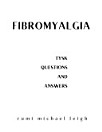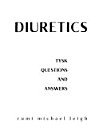Huntington's disease: TYSK (Questions and Answers)
About this ebook
The book describes how Huntington’s disease, also called Huntington’s chorea, is an autosomal dominant disorder caused by a mutation in the huntingtin gene on chromosome 4. It explains how trinucleotide CAG repeats lead to progressive nerve cell degeneration.
Topics include the differences between adult and juvenile Huntington’s disease, with attention to inheritance, anticipation, and the worsening of symptoms across generations. The text discusses neurological and psychiatric features such as involuntary movements (chorea, dystonia, bradykinesia), memory decline, depression, anxiety, obsessive-compulsive behavior, and insomnia.
Additional sections address complications such as dysphagia, weight loss, pneumonia, and epilepsy. Diagnostic methods, including genetic testing and neurological evaluation, are explained. Management strategies such as speech, occupational, and physical therapy are also described.
This book will interest students, health science learners, and those studying genetics and neurology who want to understand Huntington’s disease and its progression.








